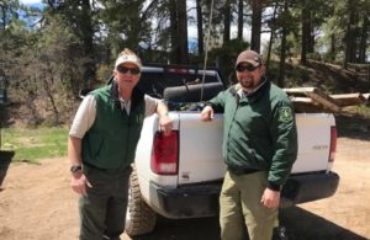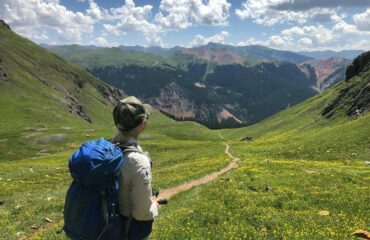Winter in southwest Colorado is finally here! In this weather our local animals have many survival strategies – they may migrate, hibernate, or adapt their lives to the new surroundings. However, some of the most fascinating animals are those that manage to survive while remaining underneath large amounts of snow throughout the winter. Their environment is called the subnivian zone, meaning “under snow”.
When the temperatures get frigid outside, a deep layer of snow – about 10 inches or so – can act as an insulating layer to animals beneath it. The warmth here actually comes from the Earth’s core. The snow at the bottom of this layer changes form, and becomes ‘sugar snow’, or depth hoar, where the flakes don’t stick together very well. This is a benefit to small animals who can then move through it easily. Some of the most common animals that can be found under the snow are mice, voles and shrews. They burrow under the snow, finding seeds, stems and even beetles and larvae to eat. Some of the plants they find to eat even manage to stay green and growing during the winter. The small mammals living here make an amazing network of snow tunnels, and even create air shafts to get oxygen. However, it is typically very dark under the snow, making eyesight a secondary sense to these animals. Whiskers help profusely to help them find their way through the network of tunnels.
Despite these small mammals seeming to be well hidden under the snow, predators such as ermine, owls, foxes and coyotes are aware of their presence. Ermine, or long-tailed weasels, are small and thin enough to actually enter the tunnels, while larger predators appear from above, diving snout first (such as with coyotes and foxes) or feet first (such as with owls and other raptors) to grasp their prey. When you’re out this winter, look for the beautiful wing prints that owls and other raptors leave in the snow when capturing their prey.
Animals even smaller than mice manage to live under the snow as well. This includes mites, springtails and spiders. Springtails, which are small insects that can spring themselves into the air can actually be seen above the snow as well on warmer winter days, and are a great food source for the spiders under the snow. In order to survive under the snow some spiders and insects produce a sort of antifreeze in their bodies which prevents ice crystals from forming.
Things also change for animals and plants beneath the ice in the winter. Water beneath the ice doesn’t freeze, but it still remains extremely cold – usually in the mid-‘30s. Actually, the main problem for animals down there is not the cold, but the lack of oxygen in the water. During the rest of the year oxygen is added to the water through air and water currents, waves, and plants photosynthesizing. In the winter, none of this happens. Animals that live beneath the ice are cold blooded, meaning their body temperature is the same as their environment. Thus their metabolism slows down, as do their movements – some even become dormant. In this way they need less oxygen and food through the winter.
When outside this winter, you can experiment with your own ‘subnivean zone’ by creating a snow shelter, sometimes called a quinzee. These need to have quite thick walls (1 – 2 feet) to work best, but once you’ve built it you can even sleep in it at night! Or, if sleeping in the snow isn’t your thing, enjoy having a hot chocolate in front of the fire and give a thought to the animals and plants surviving the season outside in the cold.
By Gabrielle Morey, SJMA Education Outreach Director


